There are 31 vineyards in Wales and 739 in England, according to WineGB’s 2020 report. In the late 19th century, however, wine was imported from Europe and there were no commercial vineyards in Britain.
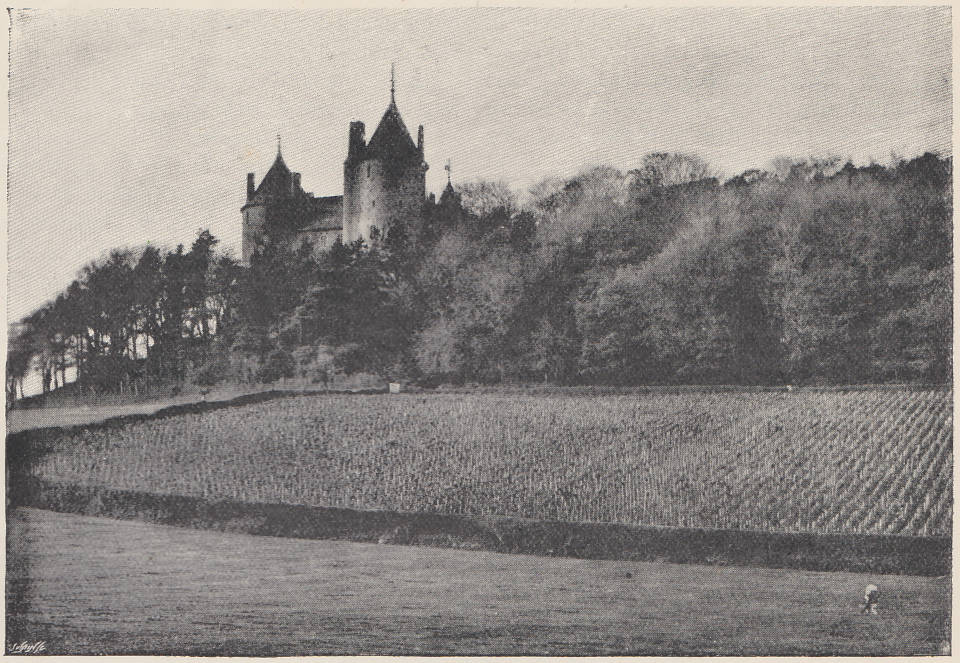
The Experiment Began
This changed in 1873, when Lord Bute asked his head gardener, Mr Andrew Pettigrew, to plant a vineyard at Castell Coch.

Mr Pettigrew visited some of the best vineyards in France to learn from the experts. He didn’t speak any French so he learnt by observation. The vineyards recommended a variety of grapes that would grow well in the colder Welsh weather.
On his return, in the spring of 1875, he oversaw the planting of 2,00 vines on the gentle slope underneath Castell Coch. Mr Pettigrew noted that the soil was perfectly suited to growing grapes and the location was adequately sheltered.
The first few years were dramatically different. There were successful vintages and complete failures, mainly affected by the summer weather.
Mr Pettigrew gave a talk to the Cardiff Naturalists’ Society in 1884, where he presented his paper, “The Vineyard at Castle Coch”.
He commented, “I had at that time no experience of the climate of South Wales, but I was pleased with the soil and the situation, and reported so to his lordship.”
“They grew well and made strong canes, which ripened thoroughly. Gardeners and others who came from a distance to see the vineyard were surprised at the luxuriance of the vines growing in the open air.”
Andrew Pettigrew – 1884
The summer of 1884 was very good and Castell Coch produced four hogsheads of wine. 1887 was even better and ten hogsheads were harvested. A hogshead is 63 gallons or 238 litres. It’s twice the size of a barrel, which contains about 150 bottles of wine. So in 1887, which was Queen Victoria’s Golden Jubilee, Castell Coch produced 3,000 bottles!
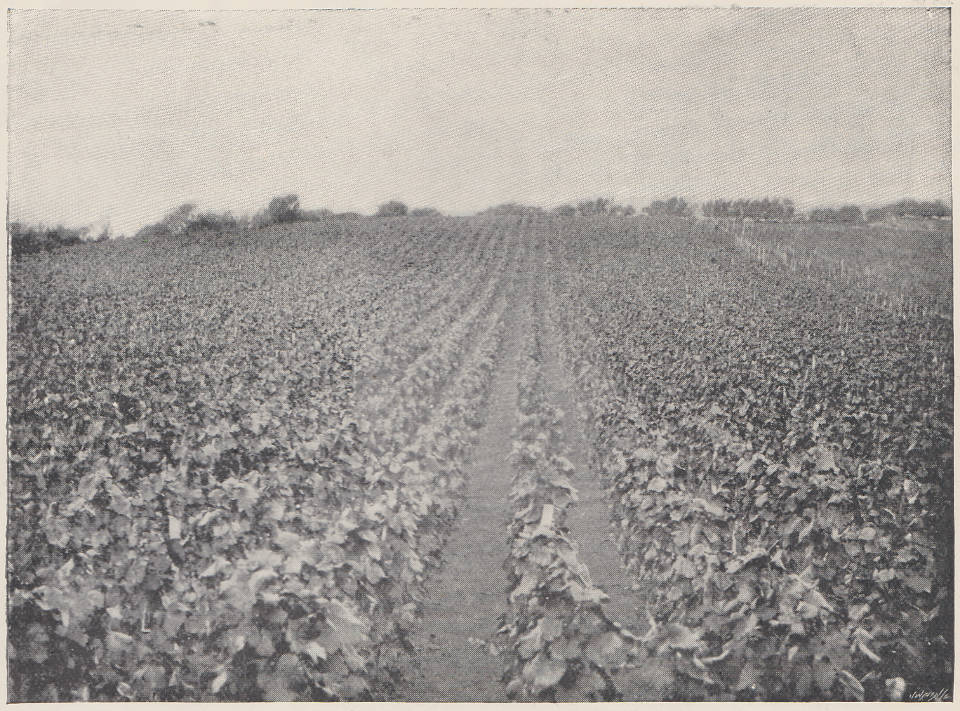
Off to Cardiff Castle
After the grapes were harvested, they were transported to Cardiff Castle for pressing. Mr Pettigrew explained to The Royal Horticultural Society in 1894, “The ripest and best fruit is gathered first, and placed in hogsheads with one of the ends out, and carted to the Castle gardens at Cardiff, where the Grapes are pulped by a machine with wooden rollers, and put into a large vat to remain for twenty-four hours to get the tannin properties out of the skins of the Grapes.”
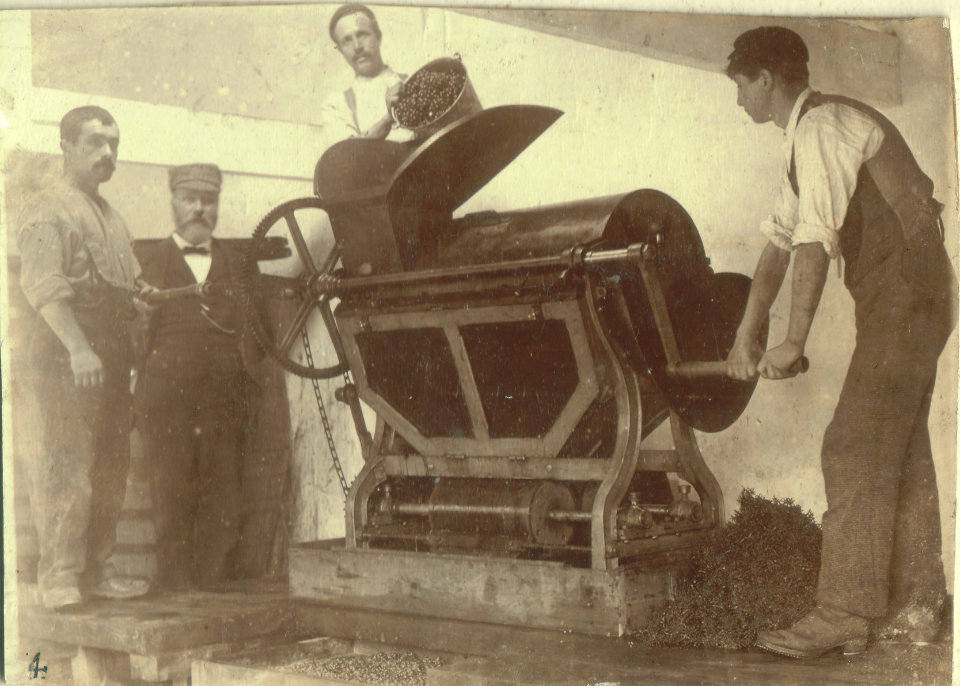
Matthew Williams noted, in his 2001 article for Country Life, that Lord Bute was delighted to oversee the process within the grounds of Cardiff Castle.
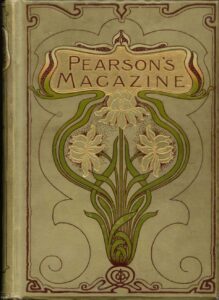
Pearson’s Magazine published an article called, “Our Only Vineyard” in 1898.
H C Fyfe presented a positive account of the vineyard, stating, “The story of the Bute vineyard is a bright one, showing what may be accomplished, in spite of the croakings of pessimists, by perseverance and courage.”
“The gardens should be seen about the end of July, for then the sight is a novel and interesting one. Long rows of vines, as straight as a line, running on a gentle, curved slope down the hill, with their tops neatly stopped four feet from the ground, and their large, dark-green, glossy foliage almost meeting in the rows – a sight not to be seen anywhere else in this country.”
H C Fyfe – 1898
Ten years after the experiment in Tongwynlais began, Lord Bute decided to lay a new vineyard along the Glamorgan coast in Swanbridge.
Bute Wines

The wine was initially sold at the Angel Hotel and the gardens of Cardiff Castle. The London wine merchants Messrs Hatch, Mansfield and Co started selling it in 1897. The wines were described as, “soft, sweet, full bodied and of a luscious character.”
The success of Lord Bute’s venture, from the first crop in 1877 to the final vintage in 1914, is hard to define. The wine was well received, even if this was sometimes for the novelty over quality, but the product was inconsistent. There were only a handful of very good years, the others affected by bad weather or disease.

One of the most successful years covered the entire cost of the experiment so it wasn’t a financial failure. Mr Pettigrew, in his 1894 presentation to The Royal Horticultural Society, noted that, “the produce of 1893 was sufficient to defray the whole of the expenses”.
Both Lord Bute and Mr Pettigrew died in the early 1900s but the 4th Marquess continued to support the vineyard until 1914. There are no references to the success of the crops between 1896 and 1914 apart from one comment by Mr Pettigrew’s son. Andrew Alexander Pettigrew spoke to the Cardiff Naturalists’ Society in 1926. He stated that 1911 was, “an outstanding year”.
The project eventually came to an end in 1914. Andrew Pettigrew explained that the 1911 vintage required 3½ pounds of cane sugar to be added to every gallon of fruit. This quantity of sugar simply wasn’t available in wartime.
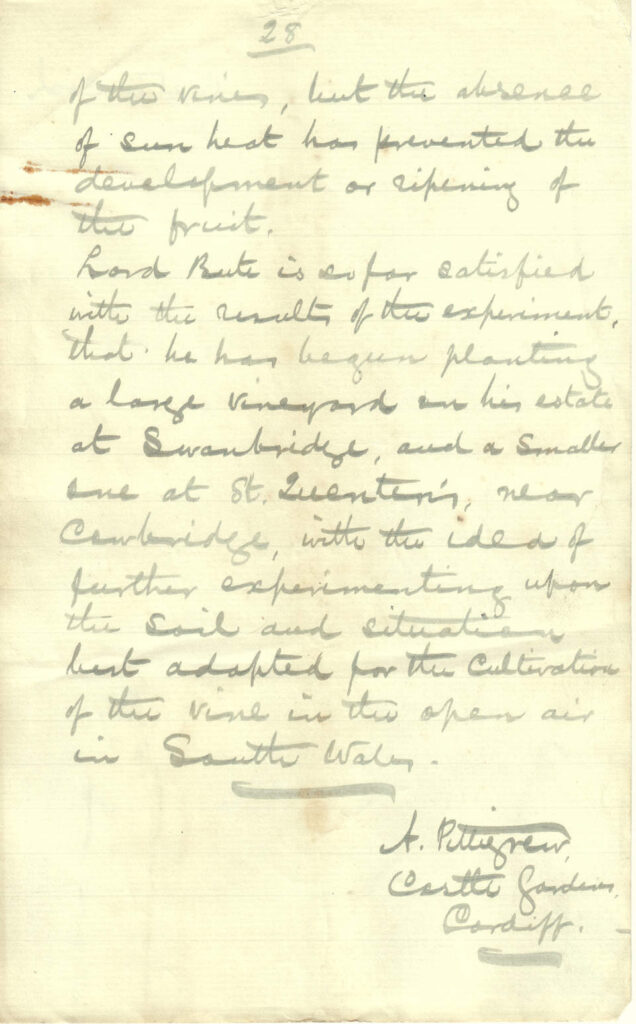
The vineyard was finally uprooted in 1920. Mr Pettigrew, reflecting on the success of 1893 vintage, said in his 1894 presentation, “If we could only rely upon seasons in Britain like the last, Lord Bute’s experiment in vine culture in the open air would prove it to be a paying industry.”
“If we could only rely upon seasons in Britain like the last, Lord Bute’s experiment in vine culture in the open air would prove it to be a paying industry.”
Andrew Pettigrew – 1894
Welsh wine made a resurgence around 100 years after Lord Bute and Andrew Pettigrew’s experiment began. Modern growers are taking advantage of Wales’ distinctive soils and diverse geography in small, sustainable vineyards. The result is a growing industry and world-class, award winning wines.
Timeline
- 1873 – Mr Pettigrew arrived in Tongwynlais to inspect the land
- 1875 – (March) Vineyard planted
- 1877 – Light crop. First wine made (40 gallons or ⅔ of a hogshead)
- 1878 – Better crop but not full
- 1879 – Vines broke well but a bad summer ruined the crop
- 1880 – Failed year
- 1881 – Good crop and successful vintage
- 1882 – No wine made
- 1883 – No wine made
- 1884 – Mr Pettigrew gave talk to Cardiff Naturalists’ Society. A good summer produced four hogsheads
- 1885 – Same quantity as 1884
- 1886 – Complete failure at Castell Coch. Swanbridge vineyard created
- 1887 – (Jubilee year) A good crop produced ten hogsheads (~3,000 bottles)
- 1888 – Crop was a failure
- 1889 – One hogshead produced
- 1890 – Six hogsheads produced
- 1891 – Three hogsheads produced
- 1892 – Two hogsheads produced
- 1893 – A great vintage in Castell Coch and Swanbridge. Worth £3,000 (Approximately £400,000 ^)
- 1894 – Complete failure. Mr Pettigrew spoke to The Royal Horticultural Society
- 1895 – Vine mildew ruined the entire crop
- 1897 – Hatch, Mansfield and Co. started selling the wine
- 1900 – Lord Bute died
- 1903 – Mr Pettigrew died
- 1911 – An outstanding year
- 1914 – The final vintage before production was stopped due to the First World War
- 1920 – Vineyard uprooted
^ According to the Bank of England inflation calculator
Sources
- Journal of The Royal Horticultural Society: “Lord Bute’s Vineyards In South Wales” By Mr A Pettigrew FRHS 1894
- Pearson’s Magazine: “Our Only Vineyard” By H. C. Fyfe. 1898
- Turn of the Century Ton: “The Castell Coch Vineyard” by RL Brown 1982
- Country Life Magazine: “Wales’s First Vineyard” By Matthew Williams 2001
- WineGB 2020 Industry Report
Images
Photos from the Pettigrew family archive were very kindly provided by Mr Tim Pettigrew. You can read more about the family history on Tim’s website. The Pettigrew family’s legacy in Cardiff is documented on the Cardiff Parks website.
The vineyard photos are from a physical copy of an article that I purchased, scanned and digitally restored.
The Pearson’s Magazine front cover was uploaded to Wikipedia by Marcus Rowland.



Great article Jack. Photos are incredible! Sarah